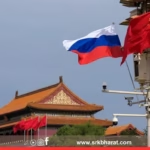In a significant boost to horticultural development, Tripura Agriculture and Farmers’ Welfare Minister Ratan Lal Nath announced that 706 hectares of land have been brought under mango cultivation in the state since 2018, reflecting the state government’s consistent focus on expanding fruit crop acreage to enhance farmer incomes and diversify the agricultural economy.
Speaking at a review meeting of horticulture schemes in Agartala on Sunday, Minister Nath said:
“Mango cultivation in Tripura has received a major thrust under the Mukhyamantri Unnoto Fal Udyan Prakalpa and centrally sponsored horticulture schemes. Since 2018, we have added 706 hectares under mango cultivation, benefiting thousands of farmers across Gomati, Sepahijala, West, and South districts.”
District-Wise Mango Cultivation Expansion (2018-2025)
| District | Area Added (in hectares) | Major Mango Varieties Planted |
|---|---|---|
| Gomati | 218 | Amrapali, Himsagar |
| Sepahijala | 176 | Mallika, Amrapali |
| West Tripura | 153 | Himsagar, Langra |
| South Tripura | 159 | Amrapali, Alphonso |
| Total | 706 |
Why Mango Cultivation Is Expanding In Tripura
1. Favourable Climate And Soil Conditions
Tripura’s subtropical humid climate, abundant rainfall, and fertile alluvial soils make it ideal for mango cultivation, particularly for mid-season and late-season varieties.
2. Government Subsidies And Support
Under state and central horticulture missions, farmers receive:
- Subsidised grafted saplings
- Assistance for pit digging and planting
- Organic manure and micronutrient support
- Technical training through Krishi Vigyan Kendras
3. Rising Market Demand
With mango demand increasing in neighbouring Bangladesh, northeast states, and West Bengal, Tripura farmers are earning higher prices, particularly for varieties like Amrapali and Himsagar that mature with superior sweetness and pulp quality.
**Minister Ratan Lal Nath On Government Initiatives
The minister emphasised that the state aims to become self-sufficient in horticultural production while boosting farmer incomes. He noted:
“We are not only focusing on mango. Similar expansion is happening in pineapple, jackfruit, and litchi cultivation. Horticulture diversification is key to doubling farmers’ income as envisaged by Prime Minister Narendra Modi.”
Major Horticulture Crops Expansion In Tripura (2018-2025)
| Crop | Area Added (hectares) | Key Districts |
|---|---|---|
| Mango | 706 | Gomati, Sepahijala, West, South |
| Pineapple | 512 | West Tripura, Dhalai |
| Litchi | 198 | North Tripura, Unakoti |
| Jackfruit | 356 | Sepahijala, South Tripura |
Tripura’s Mango Production At A Glance
According to the Department of Horticulture:
- Current mango cultivation area: ~3,400 hectares
- Annual production: ~25,500 metric tonnes
- Major varieties grown: Amrapali, Mallika, Himsagar, Langra, Alphonso
Tripura’s Popular Mango Varieties
| Variety | Features | Harvest Season |
|---|---|---|
| Amrapali | High sweetness, deep orange pulp, dwarf tree structure | June-July |
| Himsagar | Fiberless, excellent aroma, large size | May-June |
| Mallika | Hybrid with long shelf life, good for export | June-July |
| Alphonso | Rich aroma and flavour, premium market demand | June |
Farmers’ Perspective
Ajit Debbarma, mango grower from Gomati district, said:
“Earlier we only grew paddy. After grafted mango saplings were provided by the government, I planted Amrapali in 1 hectare. Last year I earned over Rs 2 lakh by selling directly in Agartala and Udaipur markets.”
Fatema Begum, farmer from Sepahijala, added:
“Mango farming requires less irrigation and gives good profit if flowering is good. Government support for plant protection has helped us.”
Export Potential For Tripura Mango
Tripura shares a long border with Bangladesh, providing logistical advantage for fresh mango exports. Agricultural officials indicated:
- Trials for export to Bangladesh have begun with Mallika and Amrapali varieties
- Efforts are underway to meet Bangladesh’s phytosanitary and packaging standards
- Future plans include connecting with Gulf markets via Kolkata exporters
Challenges In Mango Cultivation Expansion
Despite the progress, horticulture officials flagged certain challenges:
- Alternate Bearing: Many mango varieties show biennial bearing leading to fluctuating yields
- Flower and Fruit Drop: Due to climatic variability, particularly untimely rains
- Market Linkages: Need for better cold chain facilities and aggregation points for bulk buyers
Government’s Future Plans For Mango Sector
Minister Nath announced several upcoming initiatives:
✔️ Establishment of two new mango packhouses in Gomati and Sepahijala districts
✔️ Promotion of organic mango cultivation under Pradhan Mantri Kaushal Vikas Yojana (PMKVY) horticulture schemes
✔️ Introduction of drip irrigation in mango orchards to manage moisture stress during flowering
✔️ Training for farmers on integrated pest management (IPM) and post-harvest processing
✔️ Brand building of ‘Tripura Mango’ for niche marketing across eastern India
Expert View
Dr. Nirmalya Dey, horticulture scientist, Tripura University, said:
“Mango can be a game changer for Tripura horticulture like pineapple. Diversifying varieties, promoting high-density planting, and building market connectivity will enhance profitability.”
Final Analysis
Tripura’s focused approach on mango cultivation expansion aligns with its broader horticulture development vision. With over 706 hectares added since 2018, the state is rapidly emerging as a key mango producer in the northeast, boosting rural incomes and creating new agro-business opportunities
The success of mango farmers underlines how scientific interventions, government schemes, and market-driven production planning can transform agriculture into a profitable enterprise for small and marginal farmers











